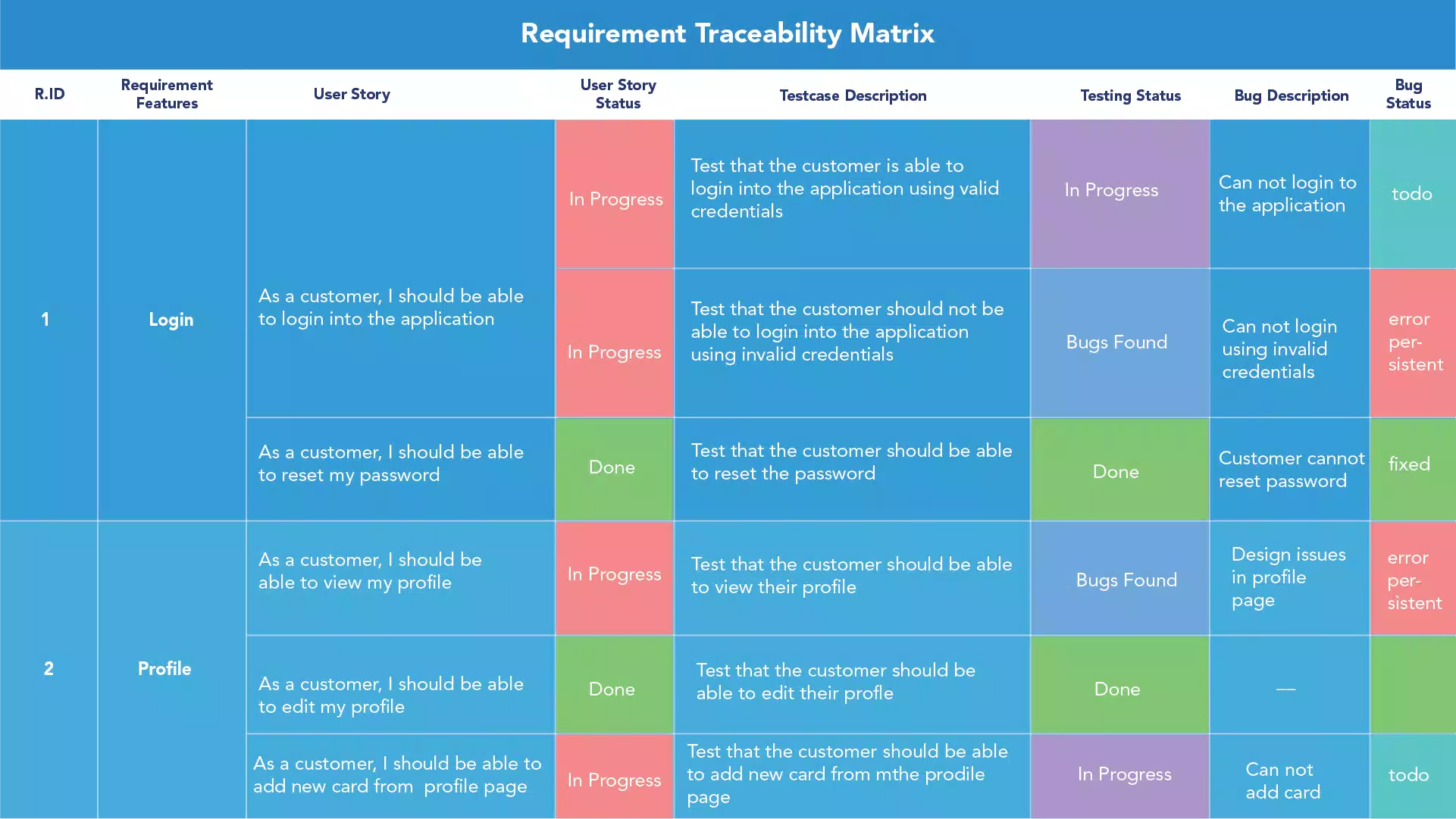If you are a Quality Assurance Engineer, you know the drill: there are so many things to track and put together at the same time that you are always afraid of missing out on one or two. Requirements, related test scenarios, test cases, and their bugs, the list of things to track can get tedious.
However, there are techniques and tools to make the lives of QA teams easier: one I personally endorse is the Requirement Traceability Matrix or RTM.
RTM is a document used to map all the requirements and their artifacts. It is used to track the requirements and to check if the requirements are met or not. This single document keeps a record of all the issues, tests, test results, and client demands and validates that all the requirements are checked during software testing.
Purpose of RTM
As a software tester, the most important thing is to understand the requirements thoroughly. Then the requirements are further split into test scenarios and test cases. After testing the test cases QA creates bugs that are found during the software testing process.
So RTM helps in mapping and monitoring all the requirements and their corresponding test scenarios, test cases, and bugs. It is used to check the status of ongoing requirements. It also includes the current status of the test cases, i.e, if they have passed or failed. This helps the testing team to scan the overall testing activity of the product.
You might also like to read : Design QA as a system
What parameters are included in a RTM?
A general RTM includes the following parameters:
- Requirement ID: A unique ID for each requirement
- User story: A description of the feature from the perspective of the user
- User story status: A status whether the user story is in progress or done
- Test Case description: A description of the test that is to be performed
- Test status: A status that shows the current state of the test case i.e. whether it is done, testing in progress, or if there are any bugs found
- Bug description: A description of the bugs that are detected
- Bug status: A status whether the bug is fixed, to-do, or error persistent
How to create a RTM?
First, requirements are gathered from the Business Requirement Document. Using a worksheet, those requirements are mapped with associated user stories and those user stories are mapped with corresponding test cases. Then the bugs detected while testing those test cases are listed accordingly.

The status of the user stories, test cases, and bugs are also updated during the process of software testing which will help the software testers keep track of the overall status of the requirements. A general example of Requirement Traceability Matrix (RTM) can be seen above.
Benefits of using RTM
So why should a Quality Assurance team use Requirement Traceability Matrix (RTM)? Here are some of the reasons why you should start using RTM immediately:
- Rather than using multiple documents, it links all the data in a single document.
- It confirms the full test coverage of the product.
- It also connects contributors and stakeholders to the requirements. Through this document stakeholders and customers can also walk through the status of the requirements and make decisions accordingly.
- It also analyzes the quality assurance engineers’ work of revising the test cases.
Final Words
Requirement Traceability Matrix (RTM) makes the lives of the Quality Assurance team easy, in the sense that it puts all the scattered information together in a single document. When you are in sync with the requirements of the client and the progress of your team, you can ensure that there are no defects or flaws during deliverables. RTM is a valuable tool to measure and ensure the project’s accuracy.
At Gurzu, we develop powerful software solutions to real-life problems. Explore some of our awesome projects here. Need help with software development? Book a free consultation call.

